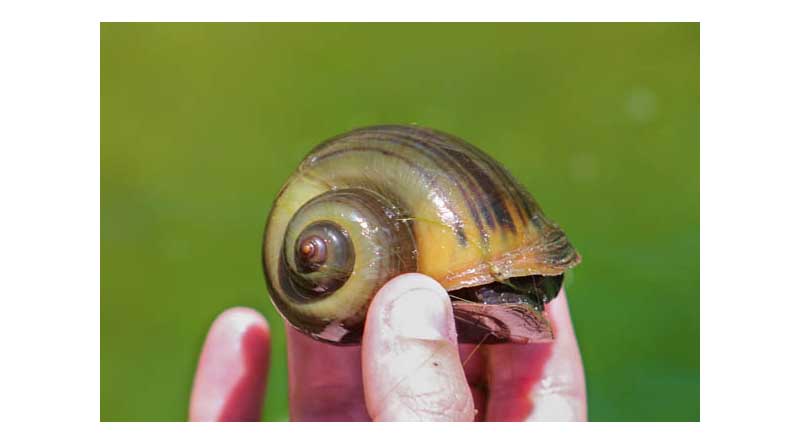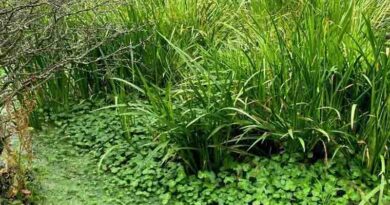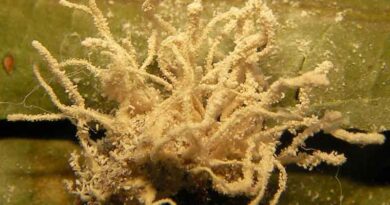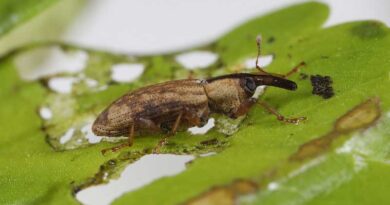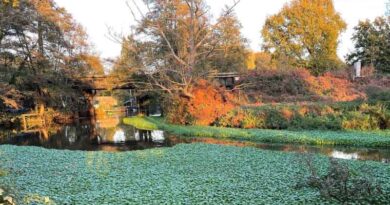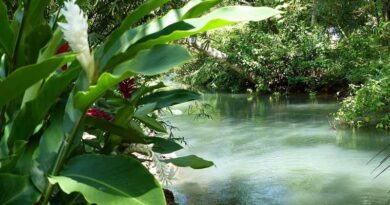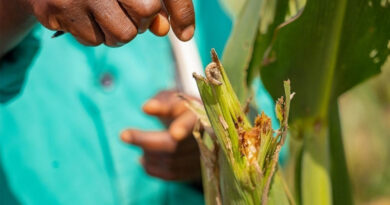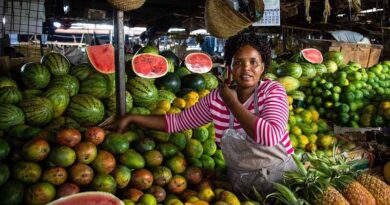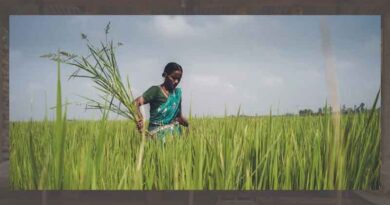What Makes Invasive Apple Snail the Worst Invasive Invertebrate of Waterways?
11 April 2024, Kenya: This article was originally published on CABI Digital Library
Overview: What is the invasive apple snail?
The invasive apple snail is a large freshwater snail with a large variation in shell colour. This species is in the ‘top 100 worst invasive species’, and is possibly the most damaging aquatic snail, spreading via canals, rivers and during floods. It feeds on aquatic plants and can devastate aquatic crops such as rice (in Southeast Asia) and taro (in Hawaii). It is also damaging to ecosystems as it preys on native fauna and outcompetes native apple snails, altering ecosystem functioning. This invasive snail is also a vector for many parasites, notably the nematode Angiostrongyulus cantonensis, which causes eosinophillic meningitis in humans.
The invasive apple snail is legally classified as a quarantine pest or a potential pest in several countries, including Australia, China, Malaysia, Spain, the USA, and Vietnam. This recognition highlights the global concern and the need for stringent measures to prevent its further spread.
Taxonomic confusion and physical characteristics
The invasive apple snail is in the family Ampullariidae. Prior to genetic work in 2007-2009, P. canaliculata was often confused with P. maculata, another large aquatic snail, and the two species were both commonly called the golden apple snail. P. canaliculata is now called the invasive apple snail to avoid confusion.
The snails’ shell is smooth, ~35-60 mm in height and is yellow-brown to greenish-brown, sometimes with dark brown spiral bands. Adult females are larger than males. The foot is brown-grey and oval with long tentacles and a short snout. The eggs are spherical and pink-ish in colour and harden as time goes on, eventually becoming whitish pink just before hatching. Eggs are laid just above the water surface, for example on rocks, plants and bricks. The number of eggs per clutch averages ~260, ranging from as few as 12 to as many as ~1000. You can read more about the invasive apple snails’ life cycle here.
Native habitat
The natural range of P. canaliculata consists of the Lower Paraná, Uruguay and La Plata (Argentina) basins, although based on habitat similarity and watershed connections it is possible that it may also occur in the lower reaches of the Upper Paraná and parts of southern Brazil. The snails’ range is likely to be restricted by temperature as its southern limit in Argentina appears to be temperature dependent.
This freshwater snail is restricted to wetlands that are flooded for at least part of the year, such as marshes, swamps, ditches, irrigation canals, ponds and lakes. It is thus well suited for living in rice paddies, taro patches, natural water-treatment facilities and similar habitats. It can survive harsh environmental conditions caused by pollutants in the water.
How did the invasive apple snail spread across the word?
P. canaliculata was first introduced to Asia in Taiwan from Argentina in 1979-1981 as a potential food source. The snail found its way into aquaculture facilities in south Asia and was subsequently released into agricultural and natural wetlands and quickly spread to many countries in Southeast and East Asia. Especially infested areas include most of the rice-paddies Taiwan, Japan and the Philippines. The invasive apple snail was introduced to Hawaii in the 1980s and is now present in California, Arizona and Florida. There is only one record of this species in Europe, in the Ebro Delta in Spain. This species causes issues in various South American countries, such as Ecuador, and has recently been detected in Kenya for the first time.
To highlight the speed of spread of this species, it took only five years from initial introduction into Vietnam for Pomacea spp. (both P. canaliculata and P. maculata) to be present in every rice-growing province of the country.
The pet and aquarium trades has also played a role in P. canaliculata introduction and is thought to be the pathway of its introduction to Spain. Accidental introductions occur less commonly, with instances of juveniles and eggs being transported on boats or crop parts in Hawaii. The invasive apple snail is also introduced and used as a biological control agent for aquatic weeds, facilitating it’s spread.
While P. canaliculata can spread naturally by floating downstream, crawling upstream, and even attaching to birds, this may not necessarily result in long-term, long-distance dispersal. It is thought that floods can play an important role in large-scale expansion of the snails’ range by dispersing egg sacks, which can contain thousands of eggs each. However, the snails’ rapid and long-distance expansion in Southeast Asia following its introduction to Taiwan was predominantly human mediated.
A recent collaboration between the Kenya Plant Health Inspectorate Service (KEPHIS) and CABI scientists confirmed the presence of this highly invasive snail in Kenya in 2021. This has led to growing concern surrounding the impacts this snail might have on rice production in Kenya and surrounding countries, if it spreads further. You can find out more information in the invasive apple snail portal here.
The devastating impact of the invasive apple snail
In areas where it has been introduced, P. canaliculata causes economic harm, has become a human health problem in some regions, and has the potential to have serious environmental and biodiversity impacts.
P. canaliculata is a generalist macrophyte omnivore, hence it consumes a huge range of species and has a profound impact on aquatic plants. Therefore, invasions of this species can have a negative impact on aquatic crop production and native biodiversity. There are reports of devastation to rice fields in Southeast Asia and taro crops in Hawaii, amongst many other crop species.
The competitive behaviour of P. canaliculata threatens native apple snails, disrupts ecosystems, and alters natural functions. The species has been linked to the decline of native Asian freshwater snails via competition for resources and will also prey on other species of aquatic snails. In Thailand, high densities of invasive apple snails result in depletion of aquatic vegetation, high nutrient concentrations and high phytoplankton biomass.
Furthermore, the species is a vector for several parasites that cause diseases in humans, such as a fluke that causes intestinal problems and schistosomes that cause dermatitis. Most importantly, these snails host the rat lungworm (Angiostrongylus cantonensis) which infects humans if ingested and can cause eosinophilic meningitis, which is potentially fatal. P. canaliculata is eaten raw as a delicacy in some areas in Asia, resulting in numerous cases of angiostrongyliasis in southern China, also caused by A. cantonensis. The empty shells of dead snails are also a health hazard as they can cut the feet of people working in the fields.
How can the invasive apple snail be controlled?
Like with most invasive aquatic species, the best method for avoiding infestation is prevention, as once the species is established, removal is near impossible. Most affected Asian countries and regions have quarantine measures for all Pomacea species. Eradiation is likely only possible during the early stages of infestation, when the species is still localised to one small area.
There is only one example of eradication of any apple snail. In Palau, eradication of a new infestation of the native Asian apple snail Pila conica was accomplished by manually collecting the snails from the infested pond and covering the pond with a layer of oil.
Removal of snails and egg masses by hand is a widespread control method and is somewhat effective on a small scale but is extremely time consuming. Destruction of eggs can be facilitated by placing stakes in the paddy on which the snails oviposit, which can then be removed and destroyed. Wire or bamboo screens can be placed between fields and across irrigation inlets to trap snails and prevent them form moving to new fields.
There are ways to reduce the damage to crops done by P. canaliculata involving ploughing, certain methods of crop management, detailed by the FAO. Monitoring the size and spread of P. canaliculata populations is essential to measure the success of control strategies, such as this study in Beijing.
Various fish, birds, rats, lizards, frogs, toads, beetles and ants will feed on P. canaliculata, but none of these have been found to significantly impact populations. Ducks and fish have been used for biological control to some success.
In terms of chemical control, several molluscicides have been used against P. canaliculata, such as organotin compounds, copper chelate, calcium cyanamide, plant extracts, and sodium pentachlorphenolate. But these pose great environmental risks to other aquatic species. Furthermore, many molluscicides are expensive and only last for up to three days in the paddies, being washed away by rain and drainage to non-target areas. Molluscicides will also affect fish and human health.
Does the invasive apple snail have an ecological role?
All apple snails play an important role in the freshwater systems in their native range, including wetlands of great biodiversity value, they are important food resources for other species and play key ecological roles in nutrient cycling. P. canaliculata in particular is assumed to contribute to ecological function in its native range, but this is understudied due to its invasive function.
Climate change and the invasive apple snail
Lv et al. (2011) modelled P. canaliculata distribution in China under global warming scenarios, suggesting a potential northward spread into new areas. Similar range expansions may occur in Korea, Japan, India, Bangladesh, and parts of Australia and Europe. The potential impact of climate change on its distribution underscores the need for vigilant monitoring and control measures.
Also Read: ADAMA Launches New Multi-Crop, Broad Spectrum Fungicide Maxentis®
(For Latest Agriculture News & Updates, follow Krishak Jagat on Google News)

